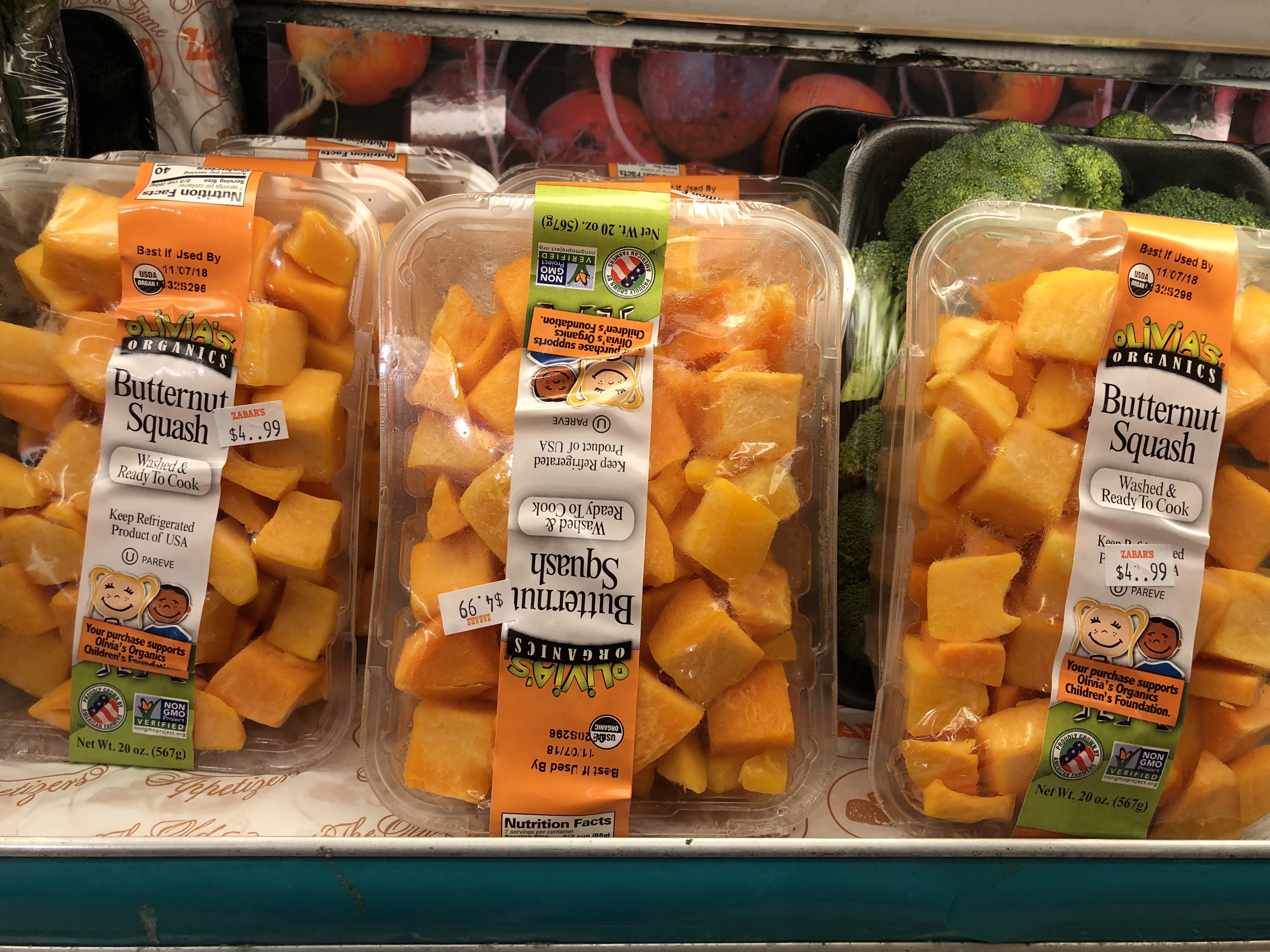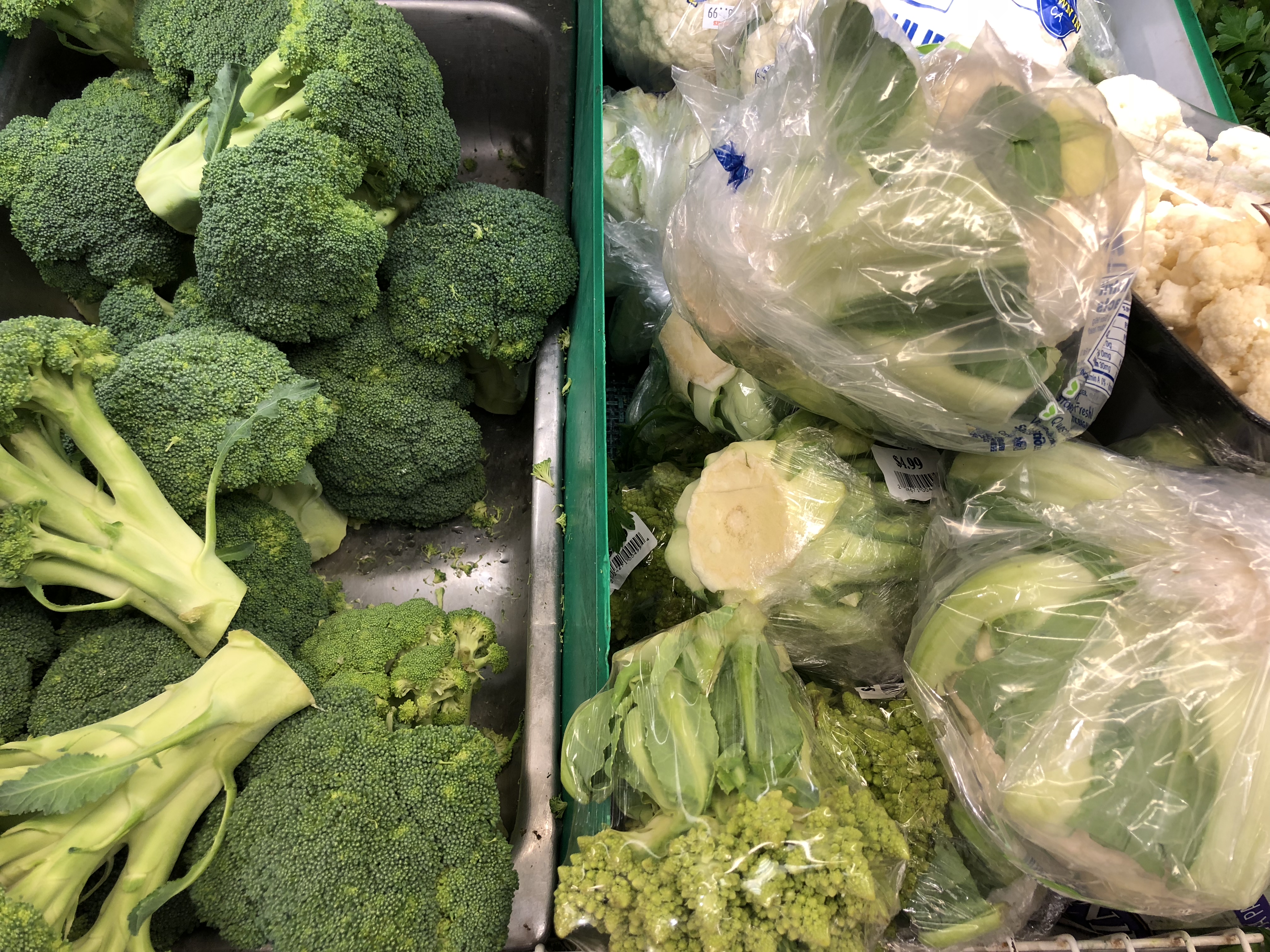When you walk into the grocery store and see perfectly diced onions sitting in a container on a shelf, it’s easy to be tempted by convenience. Instead of spending ten minutes crying over your cutting board as you tediously chop a whole onion by hand, you could just pop open the lid and add onion bits to whatever you’re making in seconds. But it’s definitely not cost effective. Taking the easy way out and purchasing pre-chopped fruit and vegetables instead of buying them whole is huge money waster.
We get it though. People tend to lean towards packaged fruits and vegetables because it saves a lot of cooking time. If you’re a salad eater like me, prepared fruits and vegetables allow you to just throw everything in a bowl, instead of wasting time chopping them. It’s also a lifesaving option for people with mobility issues, who suffer from poor grip strength and are unable to chop their fruits and vegetables on their own.
Videos by VICE

But while pre-chopped produce saves time, it will not help you keep money in your pockets. Food is the third biggest living expense (after housing and transportation) for the average family in the US, which spent about $7,729 on it in 2017, according to Bureau of Labor Statistics data. And while you can save hundreds of dollars a month simply by cooking at home, you’ll save even more if you shop smarter and get comfortable using your cutting board to chop fruits and vegetables yourself.
Whole produce v. chopped produce: a price comparison
To find out just how much you’ll save by buying whole produce, we checked out prices at national chains and local stores alike and were shocked to find chopped produce selling for more than three times the cost of whole items in some cases. Here are some examples:
Butternut squash, organic (from Safeway)
Whole: $1.29 a pound
Chunked: $4.80 a pound

Broccoli (from Zabar’s in NYC)
Whole: $2.99 a pound
Chopped florets: $4.99 a pound

Lettuce, romaine (from Peapod)
Whole: $1.99 a head
Hearts: $3.99 for a 22-oz. bag

Mango, organic (from Amazon/Whole Foods)
Whole: $3.99 each
Chunked: $5.60 a pound

Pineapple (from Food Universe in Harlem, NYC)
Whole: $2.99 a pound
Chunked: $4.99 a pound

Red onion (from Walmart.com)
Whole: 49 cents a pound
Diced: $4 a pound

Red pepper (from Food Universe in Harlem, NYC)
Whole: $2.99 a pound
Sliced: $3.99 a pound

The choice seems pretty obvious here.
How to chop your way to big savings
If you want to start saving by getting out your chef’s knife, there are plenty of ways to shorten your cooking time. One way is to prep your veggies and fruits in advance. Instead of purchasing pre-chopped onions, buy a regular onion, chop it up, store it in a airtight container, put it in the fridge and boom, you have chopped onions waiting for you whenever you need them. You can do this with any vegetable or fruit you know you’ll be using throughout the week.
The best type of knife to use depends on the type of fruit or vegetable you’re cutting. A general rule of thumb is if the fruit or vegetable is larger and tougher to cut, use a chef’s knife. Chef knives are multi-purpose larger knives that are good for cutting things like broccoli, pineapples, and squash. If cutting larger fruit seems pretty intimidating, you can watch videos like this one to give you a better idea of where to start cutting and how to safely cut larger fruit with a larger knife.
If you need a knife to cut something that is smaller like an apple or peach, go for the paring knife. It’s much smaller than a chef’s knife and you’ll be less likely to impale yourself when you’re trying to make apple slices. And remember to keep your knife sharp to speed cutting time and reduce the chance of injuring yourself if it slips in your hand because it’s too dull.

Any type of cutting board will do, but cutting boards made of wood keep your knives sharper longer. If you still don’t trust yourself with a knife and still don’t want to waste time chopping your produce, you can purchase a fruit and vegetable dicer for about $20 to help speed up the process; no knife required. (For more ideas on handy kitchenware, check out this guide from Munchies.)
Lastly, keep in mind that some fruits and vegetables last longer than others so you may need to prep your produce twice a week. If you want to store leafy greens like lettuce or cilantro, wash and dry the leaves so they don’t become soggy from the excess moisture, then place them in a ziplock bag with a paper towel wrapped around it to absorb any extra water.
Paying for someone else to chop your produce is like paying for someone to do your math homework: just do it yourself. Your bank account and wallet will thank you later.




